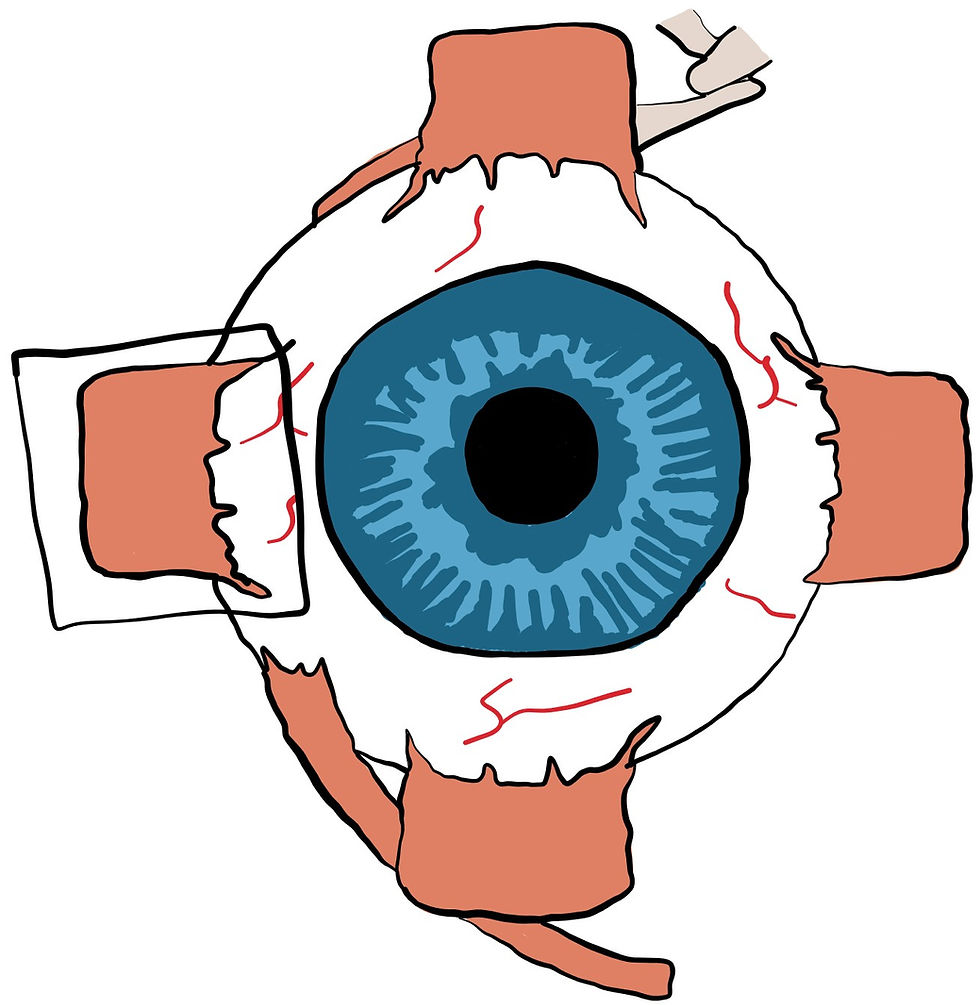Dr Ben Wild
Overview |
There are 12 cranial nerves that form the parasympathetic nervous system that controls the body. Interestingly, most of these nerves affect either the eyes or the eye muscles in some shape or form.
There are two 6th nerves otherwise known as abducens nerves. One controls a muscle on the right eye and the other controls a muscle on the left eye. The muscles under control of these nerves are responsible for moving the eye laterally towards the ear, a process known as abduction.
One, or both, of these nerves can be affected by vascular issues like high blood pressure and/or diabetes, can be affected by elevated pressure within the skull, or can be secondary to a growth. When due to vascular issues, the condition, 90% of the time, resolves on its own in weeks to a few months. When due to a tumor, it will not resolve until the pressure from the tumor is treated.

A healthy pair of eyes looking off into the distance.

A right 6th nerve palsy (eye on left (right eye) is turned inwards).

Frontal view of a right eye with the attached muscles. The square showing which muscle that is affected by a 6th nerve palsy.
Signs and Symptoms |
Signs
One eye is turned inwards. This is more obvious when looking in the distance and less when looking up close.
Symptoms
Double vision especially when looking to the side of the affected nerve and loss of the ability to turn an eye outwards.
Causes and Risk Factors |
Causes
Loss of function of the abducens nerve whether from lack of oxygenated blood flow or physical pressure.
Risk Factors
High blood pressure, diabetes, brain tumors, intracranial hypertension, trauma.
Prevention and Treatment |
Prevention
Ensure a healthy lifestyle to avoid vascular issues like high blood pressure, diabetes, etc.
Treatments
· Needs full neurological work up to identify the cause.
· An episode can be just monitored since 90% of cases resolve spontaneously in weeks to months.
· Fresnel or permanent prism in glasses to correct the double vision.
· Patch one eye to eliminate the double vision.
· Botox.
· Surgery (usually only after 12 months since initial onset).
Prognosis |
In the vast majority of cases, this condition resolves on its own. After identifying the underlying cause, and after seeking treatment for that cause, it is likely one would regain full use of the nerve and the eye muscle. In rare cases, surgery or prism glasses would be required on an ongoing basis.
